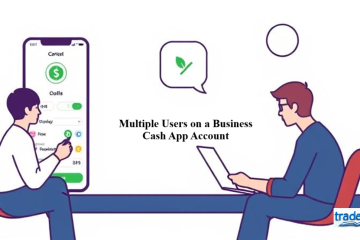Protecting valuable business information is crucial in maintaining a competitive edge in today’s market. One of the most effective ways to safeguard such information is by classifying it as a trade secret. But what exactly qualifies as a trade secret, and what key elements must be in place to ensure that business information is legally protected?
In this guide, we will explore the three essential elements required to have a legally recognized trade secret and discuss strategies for businesses to ensure their confidential information remains secure. But first, let’s define what a trade secret is and why it is essential for business success.
What Is a Trade Secret?
A trade secret is any confidential business information that provides a company with a competitive advantage over its competitors. This can include a wide range of valuable information, such as:
- Formulas (e.g., the secret recipe for Coca-Cola)
- Manufacturing processes
- Business strategies
- Marketing techniques
- Customer lists
- Software codes
- Pricing information
Unlike patents or trademarks, trade secrets are not registered with a government body and do not require formal disclosure. Their protection lasts as long as the secret remains undisclosed. If a trade secret is revealed or independently discovered, it loses its protected status, making it vital for businesses to take proactive steps to maintain secrecy.
Now that we understand what a trade secret is, let’s explore the three fundamental elements required for its legal recognition and protection.
-
Confidentiality: The Foundation of a Trade Secret
The first and most critical requirement for information to qualify as a trade secret is confidentiality. In simple terms, if the information is widely known or easily accessible to the public, it cannot be considered a trade secret. Maintaining confidentiality ensures that only authorized individuals within a company have access to the valuable information.
How to Maintain Confidentiality
To ensure business information remains confidential, companies must implement strict policies and security measures, including:
Non-Disclosure Agreements (NDAs)
- Employees, business partners, and contractors should sign NDAs to legally enforce confidentiality.
- These agreements should outline the consequences of unauthorized disclosure.
Limited Access to Sensitive Information
- Only essential personnel should have access to confidential business data.
- Implementing access controls such as password protection, secure storage, and restricted physical entry to sensitive areas can help maintain secrecy.
Encryption and Cybersecurity Measures
- In the digital age, securing data through encryption and cybersecurity protocols is crucial.
- Firewalls, VPNs, and multi-factor authentication should be implemented to prevent unauthorized digital access.
Employee Training
- Businesses should educate employees on the importance of trade secrets and train them on how to handle sensitive information.
- Regular training can help employees understand what constitutes confidential information and how to safeguard it.
Legal Action Against Breach of Confidentiality
- If trade secrets are leaked or stolen, businesses should have legal provisions to take immediate action against the responsible party.
Consequences of Losing Confidentiality
If confidentiality is lost, the information can no longer be legally protected as a trade secret. For example, if a company fails to secure its customer list and it becomes publicly available, competitors can use it freely without legal repercussions.
-
Economic Value: The Competitive Advantage of a Trade Secret
The second key element of a trade secret is that it must provide independent economic value to the business. In other words, the information must give the company a competitive advantage in the market because it is not publicly known.
How Economic Value is Derived
Trade secrets can enhance a company’s competitive position in several ways:
- Lower Production Costs
- A secret manufacturing process can allow a business to produce goods at a lower cost than competitors.
- Example: A specialized technique that reduces material waste and enhances efficiency.
- Unique Products or Services
- A proprietary recipe or formula that sets a company apart from competitors.
- Example: The secret blend of herbs and spices used in Kentucky Fried Chicken (KFC).
- Exclusive Market Insights
- A well-researched customer database allows a company to target marketing campaigns effectively.
- Example: A tech firm with unique consumer behavior analytics that competitors lack.
- First-Mover Advantage
- Trade secrets can help businesses maintain their market position by preventing competitors from replicating their success.
- Example: Google’s search algorithm remains a trade secret, giving the company a competitive edge in the search engine market.
Losing Economic Value
If the information is disclosed, its economic value diminishes. For instance, if a competitor gains access to a confidential software algorithm, they could replicate the technology, eliminating the competitive advantage the original company had.
-
Reasonable Efforts: Proactively Protecting Trade Secrets
The third and final element required for a trade secret is that the business must take reasonable measures to protect it. Simply having valuable and confidential information is not enough; the company must actively implement strategies to prevent unauthorized access or disclosure.
How to Implement Reasonable Protection Efforts
- Strict Access Controls
- Restrict access to only authorized personnel.
- Use password-protected databases and restricted physical access.
- Non-Compete Agreements (NCAs)
- Employees should sign NCAs to prevent them from using trade secrets if they leave the company.
- Regular Security Audits
- Businesses should conduct periodic audits to ensure trade secrets are secure.
- Example: Monitoring data access logs to detect unauthorized attempts.
- Surveillance and Monitoring
- Using security cameras, biometric authentication, and other surveillance techniques to prevent leaks.
- Legal Safeguards
- Implement legal contracts with third-party vendors to ensure that trade secrets are protected when shared externally.
Legal Precedents on Trade Secret Protection
Courts have ruled in numerous cases that a company must show it made reasonable efforts to protect its trade secrets. For example, if a company fails to use NDAs or access controls, a court may not recognize the information as a trade secret in the event of a legal dispute.
Why Trade Secret Protection Matters
Trade secrets offer businesses long-term competitive advantages without the need for costly patents. Unlike patents, which have an expiration date, trade secrets can remain protected indefinitely—provided they are kept confidential and businesses take reasonable measures to safeguard them.
Companies that effectively protect their trade secrets can:
- Maintain exclusive control over valuable innovations.
- Avoid costly legal disputes over intellectual property rights.
- Enhance their market position by preventing competitors from duplicating their proprietary knowledge.
Final Thoughts: The Key to Safeguarding Trade Secrets
To qualify for trade secret protection, information must meet three essential criteria:
- Confidentiality – The information must be kept secret and not publicly available.
- Economic Value – The information must provide a competitive advantage.
- Reasonable Efforts – The business must take active steps to protect the information.
By understanding and implementing these principles, businesses can safeguard their valuable trade secrets and maintain their competitive edge in the marketplace. Companies should consistently review and update their security measures to ensure their trade secrets remain protected in an evolving business landscape.
If businesses take these steps seriously, they can protect their confidential information effectively, ensuring that their trade secrets continue to drive innovation and success.
Related Post:
Can I Have 2 Apex Accounts on Ninjatrader
BitTorrent Coin (BTT) Buying Guide: Best Exchanges, Fees & Wallet Tips
How to Buy API3 (API3) Safely: Top Platforms for Beginners
How to Buy Klaytn (KLAY) Safely: Top Platforms & Tips for Beginners




